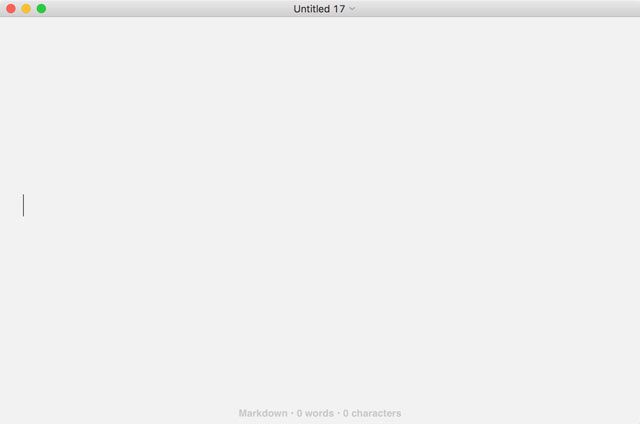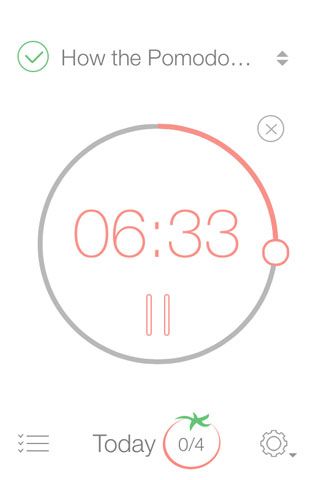Right now, as I write this article, a small timer in my Mac's menu bar counts down from 25 minutes. It currently reads, 24.31. When it reaches zero, I'll stop working and, for five minutes, chill out, check Facebook, hit up Tinder, and otherwise procrastinate.
After that, it's another 25 minutes of writing. Amazingly, that small timer is the one thing I've found that can keep me really productive.
The productivity industry likes to offer the world and deliver Arkansas. The Pomodoro Technique is one of the few things I've found that lives up to its promise. Within a day or two of implementing it, I went from mindlessly procrastinating for hours to being able to be productive on cue.
If you, like me, find yourself aimlessly checking Facebook rather than doing real work, the Pomodoro Technique might be just what you need.
How Things Used to Be for Me
Sitting down and starting to work is hard. It's especially hard if you're a freelance writer with no one looking over your shoulder. If I put on pants I'm overdressed for my office.
It's not that I don't like what I do, it's just that getting going is hard. For a long time, I used to open my laptop and… check Facebook, read my RSS feeds (RSS is not dead yet!), and generally just browse the Internet until I finally gathered up the motivation to open up a blank text document to maybe, consider, possibly, writing.
Once I'd checked Twitter a few (dozen) more times, I'd finally start writing. After a couple of sentences my mind would start to wander and I'd casually flick over to see if something new had happened on Facebook — 99.9% of the time it hadn't.
This cycle would continue for a few hours. I'd write a little bit, procrastinate for a while, write some more, and then be back to be procrastinating until, eventually, I'd finish the article I'd started hours before. What should have been two or three hours' work was taking me all day and, even worse, I was absolutely wasting huge amounts of my time overdosing on social media.
That was until I found the Pomodoro Technique.
Productivity on Cue
The Pomodoro Technique was developed by Francesco Cirillo in the 1980s. It's an incredibly basic, but effective, time management strategy. It works like this:
- Pick a task and set a timer for 25 minutes.
- For the 25 minutes, work on your chosen task. That's one Pomodoro.
- When the timer beeps, spend three to five minutes taking a short break.
- After four Pomodoros take a 20 to 30-minute break.
- Start again from the beginning.
My Pomodoro timer has just beeped so now I'm off to take a five-minute break. Everything above this point was written in one Pomodoro.
Five minutes of Facebook later…
When Cirillo first developed the Pomodoro Technique he used a kitchen timer shaped like a tomato (the word "pomodoro" means tomato in Italian). Now there are countless Pomodoro apps available that manage and track time for you. If you want to get a little bit more hands on, you can even build your own Pomodoro timer out of Lego or an Arduino and some basic electronics components.
Here are some more simple Pomodoro timers you can consider:
- Marina Timer (Web)
- Tomato-Timer (Web)
- Pomodoro.cc (Web)
- Arise (Mac OS X, iOS)
- Flow Time (Chrome)
As with any productivity system, there are fanatics who insist you abide by certain strict rules. The Pomodoro Technique is very flexible. If you get into a flow and want to work right through a break? Go ahead. Doing a particularly boring task? Work in increments of 15 or 20-minutes instead. This flexibility makes it simple to implement.
What the Pomodoro Technique Really Does
What's so effective about the Pomodoro Technique is how it plays into the human psyche.
First: The Pomodoro Technique makes it very easy to start working.
Instead of staring at a blank document trying to find the motivation to write a whole article, I just need to convince myself to write for 25 minutes. That's no time at all! By setting the bar so low, it's much easier to start, and once I've started, everything else that follows is a lot easier too.
Second: It completely counters my urge to procrastinate.
Rather than trying to work aimlessly for a few hours, I'm trying to get as much done as possible in a single 25-minute block. Whenever I get the urge to check Facebook (like right now!) I can just glance at the timer and see that I've a break in 13 minutes.
Can I wait 13 minutes?
Sure I can! By having a set time to check social media, respond to messages, and do whatever else, it's easy to ignore the urge to procrastinate when it pops up mid-Pomodoro.
Third: One of the problems with procrastinating is the guilt you feel afterwards.
If you feel unproductive because you keep refreshing Reddit and not getting any work done, then you're going to actually be unproductive. By setting aside a dedicated Pomodoro break for doing things like reading Buzzfeed's listicles, you're giving yourself permission to procrastinate for a short while.
Even better, after just two hours of work, you get a full half hour off. That's enough time to watch an episode of Archer or a few YouTube videos. Again, after giving myself permission to kick back for 30 minutes and watch a TV episode, I'm able to enjoy it and then get back to work. When I used to feel like I was wasting time and procrastinating, I wouldn't enjoy it half as much.
Fourth: Each Pomodoro becomes a small challenge.
It's such a short amount of time that I find I'm motivated to try and get as much work done as possible. I always feel the need to better, or at least equal, what I achieved in the previous Pomodoro. I know that if I mess about for five or six minutes, that's a quarter of my Pomodoro wasted which keeps me focused on working. Every Pomodoro just becomes a small challenge with myself. It's the exact same feeling you get when you go to the gym and try to lift a little more each week.
Fifth: The breaks are a great opportunity.
While most of the focus of the Pomodoro technique is on using the 25 minutes of work time, the five minute breaks are also a great opportunity. Working long hours at a computer is incredibly unhealthy. One of the best uses I've found for the breaks is to get up and move around, even if it's just walking to the kitchen to get a drink of water.
It gives my eyes a break from staring at screens and is a chance to stretch so I don't develop bad posture. On the longer breaks I'll often head outside for ten minutes just to get a breath of fresh air. Instead of sitting at my computer procrastinating for hours on end, I'm now using my time far more deliberately.
You can use the five minute breaks for whatever you want. If you're trying to build good habits or stick to your New Year's resolutions, it's a great chance to work on them. If you give yourself two minutes' extra grace, you can even get a quick, seven-minute workout in!
All these small effects combine to make the Pomodoro Technique so powerful. Each one on their own would be nice but together they've changed my life. It's taken me from your stereotypical, procrastinating freelancer, into a hyper-productive writer.
And that's another Pomodoro up! Back in five.
How Do You Work with Time?
In the past five years there are a handful of tools that have had a huge positive effect on my life, the Pomodoro Technique is one of them. Since adopting it, I've found that not only am I much more productive – I'm happier. I've got a lot more freer, and I create better work. I've shared it with other people who've found that it just as great, and today I am sharing it with you.
If you find yourself procrastinating when you're trying to work, or otherwise unable to focus, you need to try the Pomodoro Technique. If it works even half as well for you as it did for me, you'll find it life-changing.
Do you use the Pomodoro Technique? Is your experience with it as good as mine or do you think it's over-rated? Let us know in the comments.




